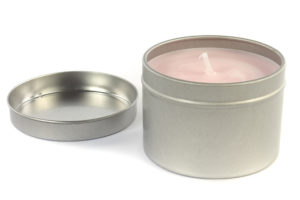Patients are often surprised when pelvic floor physical therapists prescribe breathing as an exercise. You might think, “how is focusing on breathing going to help me feel better?” Let’s explore the wonders of diaphragmatic breathing, also known as “belly breathing,” and how this simple technique can lead to big improvements in your health.
First of all, what is the Diaphragm?
The Diaphragm is a large muscle that sits at the lower aspect of your ribs and separates the thorax from the abdominal cavity. It works automatically, but can be consciously controlled (like when kids hold their breath or hyperventilate because they think it’s funny).
The Diaphragm sits horizontally as a dome. When you inhale, the diaphragm contracts and descends downward creating a void allowing oxygen to fill your lungs. The diaphragm returns to its dome shaped position after exhaling.
So, how does the Diaphragm relate to the Pelvic Floor?
Imagine your body like a canister or tin candle with a lid. The can has a top, a bottom, and a side connecting the two. Similarly, your body has a diaphragm (top), a pelvic floor (bottom), and abdominals and back muscles in the middle (sides). These sides or walls makes up your body’s “core.”
When you breathe, the motion of the diaphragm causes pressure to be directed downwards towards the pelvic floor. This motion causes passive lengthening and elongation of the muscles of the pelvic floor.
Why is all of this important?
Diaphragmatic breathing can help in cases of pelvic pain and for patients with bladder/bowel dysfunction. Pelvic pain is often due to tight and overly active pelvic floor muscles. Diaphragmatic breathing helps relax the pelvic floor through the lengthening effect to improve muscle and nerve mobility and reduce overall tension.
Tight pelvic floor muscles can also directly impact the bladder and bowel systems. Tight pelvic floor muscles can cause urinary urgency, difficulty with urinary flow/emptying of the bladder, difficulty emptying the bowels, and poor muscle activation, which can lead to leakage. By completing diaphragmatic breathing, passive elongation of the pelvic floor muscles will decrease the pressure on the bladder to improve urgency, relax the pelvic floor muscles to improve bladder and bowel emptying, and improve muscle activation for improved urinary control.
This all sounds great, you think, but how do you actually “diaphragmatically breathe?”
Find a comfortable position lying on your back. With one hand on your chest and the other on your belly, slowly take a deep breath in through your nose like you are smelling a really yummy rose candle. You should feel your belly naturally rise and your chest should move a little. Exhale and allow your belly to relax back down. This is a GENTLE technique. You should not be forcefully ballooning your belly on the inhale or drawling your navel in on the exhale. That’s it. That is “belly breathing” in a nutshell. If it’s easy to do it lying down, you can also do it sitting and standing.
We encourage patients with pain to do this 10 times every waking hour. It sounds like a lot and it’s sometimes hard for patients to remember, so if you can set a chime on your watch or phone it might help you stay on track.
Easy Peasy.


Comments are closed.